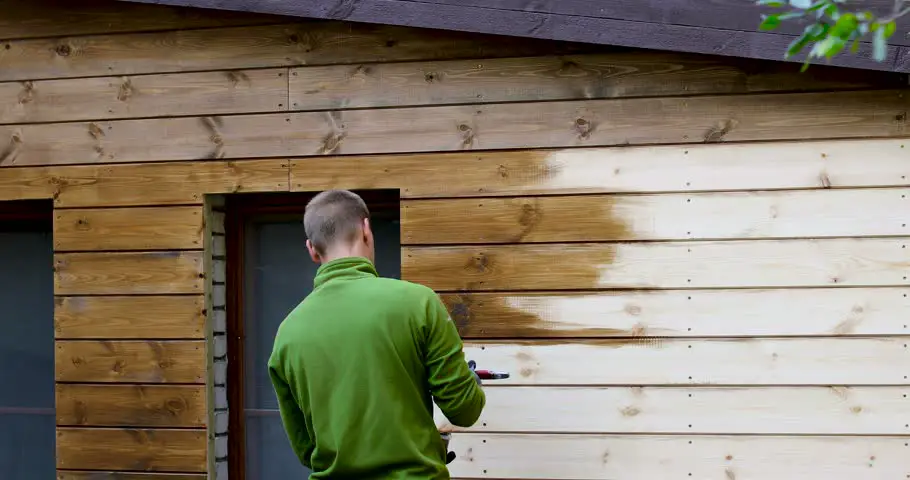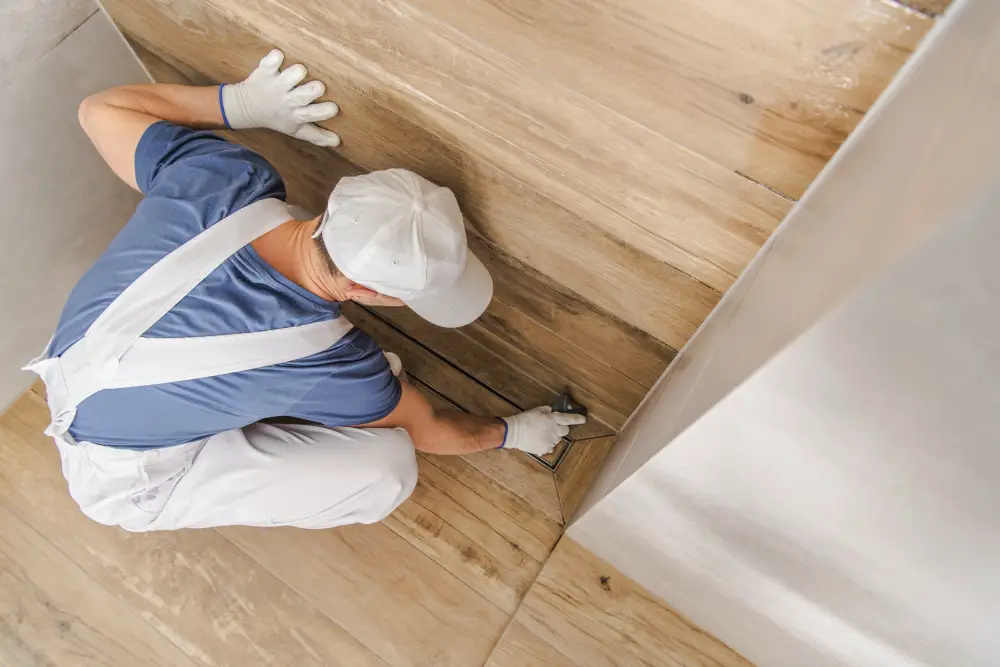DIY enthusiasts also have the idea that varnishes and paints to protect wood used outdoors are tougher and tougher than those used indoors. That's why they think, if outdoor varnishes are used to protect indoor furniture, the resulting surfaces will be much more resistant. This is a bad idea! Each product category has specific qualities and if not used for exactly the type of application intended, the result may be completely different from that expected. Each finishing product is manufactured from the basic requirements of the purpose for which it is formulated. While weather resistance, UV resistance and elasticity are important for exterior paints, scratch resistance, abrasion resistance and tinting resistance are important for interior products. In both cases, using them other than recommended will result in poor protection of the wood with consequences for its resistance over time.

Varnishes and paints for outdoor use
Wood has different resistance to outdoor conditions. There are species (teak) that can be used for a long time with minimal protection, but also species (poplar) that are not good to use outdoors, even if they are protected with the best materials. When we plan to do an outdoor installation we must first choose the right wood (acacia, resinous) and then increase its resistance by applying protective products.
A wood preservative used outdoors is good if:
- protects wood against moisture and weathering
- is not affected by dimensional variation of the wood
- resists the aggressive action of UV radiation
A very good protection against water and weather is given by oil-based products. It makes sense, given the relationship between oil and water. The downside is that, over time, oils are washed away by rain. They therefore need regular maintenance, i.e. a new coat of oil applied once a year or when the wood starts to lose its oil sheen and becomes dry. Unlike oils, varnishes and paints make the film much more resistant to rain over time. Wood that has been painted or varnished with outdoor products will not be as sensitive to weathering and the time before re-applying protection is longer.
But the problem with products that make film is different. Varnishes and paints used to protect wood exteriors must be elastic because the wood changes dimensionally according to the external humidity. The variation in external humidity can be very high and a rigid product will not resist, will crack and will no longer protect the wood. A resilient paint, however, is less hard, so you can't have both. Elasticity, which is very good on the outside, is not so useful on the inside, where what is important is the hardness of the varnish, its resistance to scratching and abrasion. This is the main reason why varnishes and paints designed to protect wood used outdoors should not be used indoors.
Resistance to UV radiation is solved using coloured products. Transparent and colourless oils are affected by UV radiation and do not last over time. That is why, outdoors, lightly coloured oils containing a small amount of pigments (lazuri). Of the products that make the film, paints are the most resistant to UV radiation because they have a high amount of pigments in their composition (30-40%). The pigments get in the way of the sun and prevent the rays from passing through the paint layer and reaching the wood. This protects both the paint and the wood. In descending order of UV resistance, semi-transparent coatings, which have a pigment content of max. 10%, and the system consisting of outdoor resistant berries + transparent coating follow.
Another reason why outdoor products should not be used indoors is the content of insectofungicidal substances. To be resistant to outdoor conditions, some products contain substances that prevent fungi and insect attack. Fortunately, these 3-in-1 materials have recently started to be replaced by separate products. An insect-fungicidal treatment material is used first, followed by varnish, lacquer or paint.

Varnishes and paints for wood used indoors
The wood inside the house is subjected to different tests than the wood outside. We no longer have the problems created by environmental conditions, nor the problem of durability, but there are problems of resistance to scratching, abrasion, staining, temperature, humidity. In addition, the aesthetic factor is much more important, the degree of gloss, some special effects or pleasant tint sometimes determining the choice of one material over another.
The strength of the materials also depends on where the object will be placed. If the furniture is used in a bedroom, the strength requirements are lower than for furniture used in a bathroom or kitchen, and the strength of a varnish protecting the floor must be clearly higher than that of one protecting the wall panelling.
Special requirements must be met for the protection of table tops, kitchen or bar tops. Using a varnish with low alcohol resistance is not the best idea in this case. Alcohol on the surface softens the varnish and makes it very easy to remove. In addition to alcohol resistance, countertops must resist staining from coffee, red wine, hot dry or wet sources, abrasion or scratching. If a varnish is used that can withstand such tests (a polyurethane varnish, for example) the table or bar top will hold up very well over time without any visible signs of use.
Those who want a more natural look of wood can use oil or wax. These are finishes that enhance the natural beauty and design of the wood, but have low strengths and are dependent on the strength of the wood. The harder the wood, the better the object finished with oil or wax will perform over time. Cearais the least resistant of all the products and is best used as a protective coating over oil or varnish.
Don't use varnishes and paints haphazardly, it's a shame about the work you've done so far. I say this especially for those who make wonderful things out of wood in their workshops, but pay less attention to the finish. Better still, spend some time researching the qualities of existing materials so you know how to choose the product that best suits your end purpose. And remember, it's often the finish that sells the item. Good luck!






























Hello.
I appreciate your work and your love for wood and I share this sentiment.I do small woodwork and I am thinking of making a kitchen countertop out of a dried walnut tree. What treatment do you advise me to do for a better resistance in time?
Thank you.
Good evening!
Thanks for your appreciation!
I would use only oil for a walnut countertop. Even if it doesn't have the strength of a polyurethane varnish and needs re-spraying every now and then, nothing compares to the beauty of oiled walnut. Even if it's more expensive, use tung oil or Danish oil. They are the best and highest quality options.
All the best!
Hello! Thank you for the information found on your website.
Can you please recommend a clear varnish/oil for a pine wood? I would like to mention that I need a high moisture protection (50-60% moisture). I have two shelves that I would like to put in the bathroom.
But I want to keep the color of the wood and be as natural as possible.
I saw that in another article you recommended Bochemit Opti F+. Would that be what I need?
Thank you! Have a nice day!
Hello!
Thanks for your appreciation too!
Bochemit is especially for the protection of wood against mould and insects. It is an insect fungicide, not sufficient for good protection against damp.
Tung oil is the best oil. Danish oil, if original, is a good choice. Also Kreidezeit oils are blends of strong and natural oils. The oils protect well against water, but the finish needs to be maintained. That is, every 1-3 years, another coat of oil should be applied.
If you prefer varnishes, the polyurethane ones with hardening are the most resistant. You can also use water-based varnishes, but you have to let them dry very well before using the bathroom because otherwise they remain opalescent. By using varnishes, you will have better mechanical resistance (to shocks, to scratches) and refinishing will only be necessary if cracks appear in the film.
All the best!
https://revistadinlemn.ro/2020/06/10/uleiul-de-tung-uleiul-pentru-lemn-care-face-pelicula-si-rezista-foarte-bine-la-umezeala/
https://revistadinlemn.ro/2018/01/15/danish-oil-ulei-finisare-lemn/
https://revistadinlemn.ro/2017/01/30/de-ce-si-cand-avem-nevoie-de-lacuri-poliuretanice/